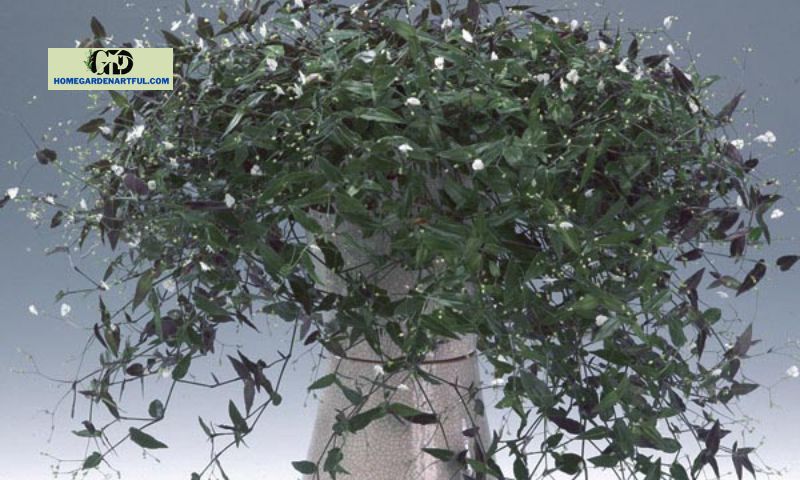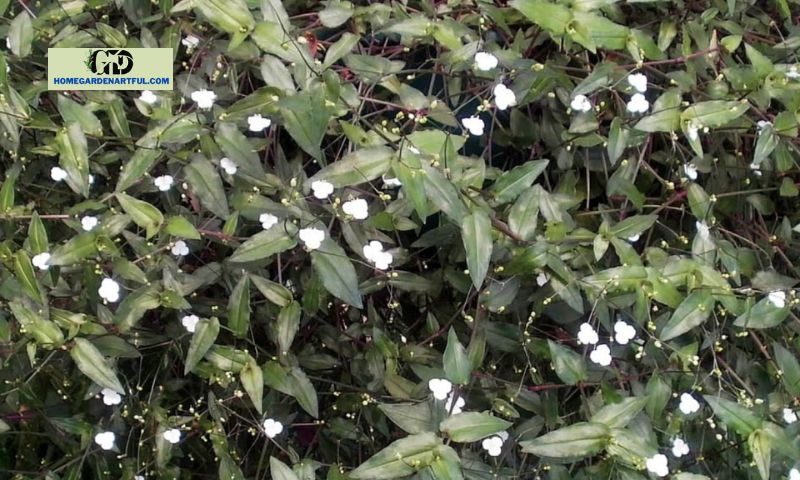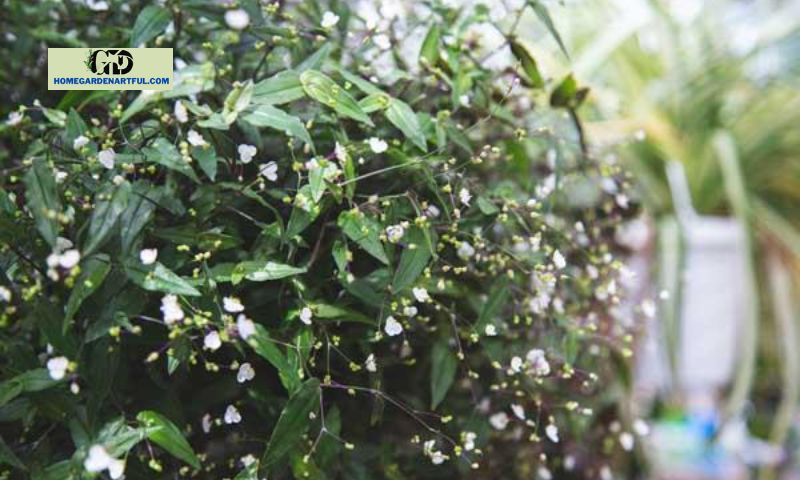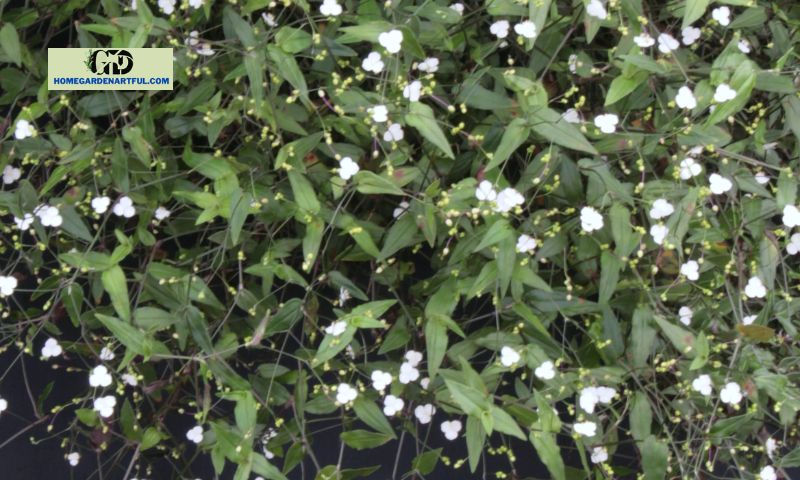Bridal Veil Plants are spreading tropical plants with tiny white flowers and exquisite dark green and purple leaves. These plants, which are native to Jamaica, Mexico, and Argentina, are sometimes referred to as Tahitian Bridal Veils.
At homegardenartful.com, read on to learn all about Bridal Veil Plant!
How to care for a Bridal Veil plant

Bridal Veil plants can grow up to 18 feet long if they are allowed to mature to their full potential! Although these plants are huge, they are usually pruned to make them more successful as houseplants. These plants are not commonly able to grow to their full size in houses. Although they can thrive in a variety of environments, their ideal climate is tropical and moderately humid.
Bridal Veil plant lighting
Although they might be injured by direct sunshine, bridal veil plants require lots of light. Give the leaves access to strong, filtered sunlight, or use a plant lamp to create artificial illumination. It can be placed under a plate-style LED diode grow light or a standalone grow light alongside other indoor plants. The plant can photosynthesize and produce energy in bright indirect light, but intense direct sunlight can burn the leaves.
Watering Bridal Veil plant

The type of soil you are using, and also the ambient humidity, temperature, and any natural precipitation, all have an impact on how frequently you should water your plant. When you see the soil getting dry, irrigate your bridal veil plants. You should water your plant whenever the top 1′′ of the soil feels dry because you don’t want to fully dry it out.
Fertilizing the plant for a bridal veil
Because they are cut off from their natural habitat and the nutrients it would supply, Bridal Veil Plants grown in pots need to be treated in the spring and throughout the summer.
Potting soil
For your Bridal Veil Plant, use a premium, organic, lightweight potting mixture. Avoid growing these tropical plants in a rich, heavy, outdoor soil mix because they usually thrive in very nutrient-poor soil. To reduce the spread of soil-borne diseases, report the bridal veil plant with fresh potting soil.
Planters

When choosing a pot, the most crucial consideration is whether or not it has drainage holes. Bridal Veil Plants require good drainage because they cannot tolerate excessive moisture. The most frequent application for bridal veil plants is as hanging wall plants, which presents a challenge because these pots sometimes lack drainage holes.
The roots of bridal veil plants might rot. With or without a drainage hole, this is possible. However, if you don’t have a drainage hole, it is practically impossible to avoid. If the extra water has nowhere to go, it will stagnate and ruin your lovely plant.
Humidity
A fairly humid atmosphere is ideal for the growth of the plants. They can handle dry air better than some other tropical species, but in dry winter climates, it’s important to add some humidity. A humidifier is the most efficient technique to increase humidity levels. A specialist humidifier from a plant store or a normal ultrasonic mist humidifier are both options.
Temperature
The ideal temperature range for the thermostat is between 50° and 70° Fahrenheit. Anything below 50° is unsuitable for the plant and is not advised. Cold temperatures will make it impossible for the plant to live. Most likely, you won’t want your house to be any colder than that!
It is advised that you keep your Bridal Veil Plant indoors for the majority of the year in most non-tropical areas. The plant can be kept outside, but only under ideal circumstances. The plant may be taken outside for a “summer vacation” during the summer, but it must be placed in an area shielded from direct sunlight. The leaves are readily scorched by direct sunshine, particularly if the plant has spent the winter indoors.
Additionally, air ventilation is crucial for bridal veil plants. It is not recommended to place these plants next to a vent for heating or cooling because doing so could harm the plants. Additionally, you should watch out for any rapid temperature fluctuations because your plant might not be able to handle them.
Conclusion
You may simply produce curtains of lush foliage adorned with a plethora of pearl-like blossoms by understanding the plant’s individual needs and according to the necessary maintenance recommendations. Additionally, you’ll be able to cultivate more wedding veil plants for your personal collection, to give to others, or to grow as annuals outdoors in colder locations.


